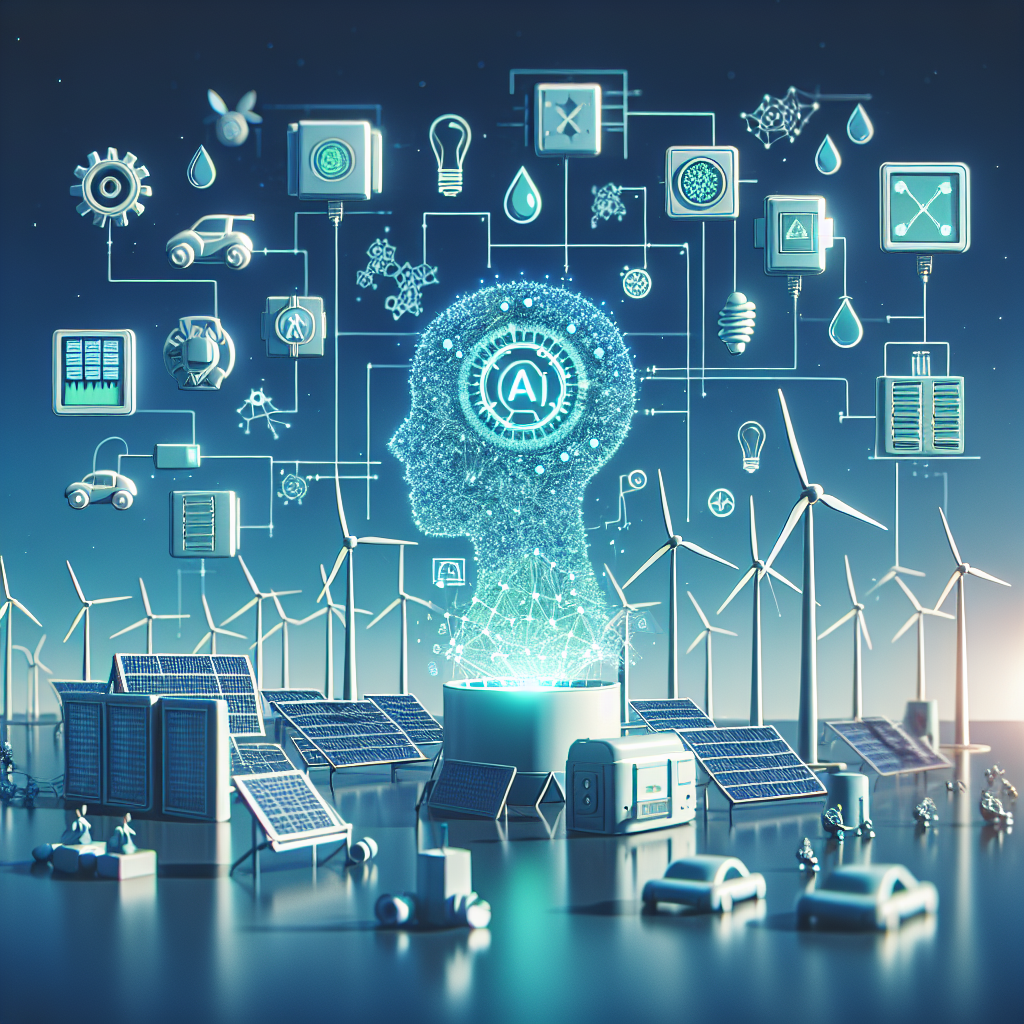As the world transitions towards more sustainable energy sources, the importance of maintaining renewable energy infrastructure is becoming increasingly critical. Renewable energy sources such as wind turbines and solar panels require regular maintenance to ensure optimal performance and longevity. Traditional maintenance approaches are often reactive, leading to costly downtime and potential equipment failures. Leveraging artificial intelligence (AI) for predictive maintenance in renewable energy infrastructure can help alleviate these issues by proactively identifying potential problems before they occur.
Predictive maintenance uses data analytics and machine learning algorithms to predict when equipment is likely to fail, allowing maintenance teams to address issues before they become critical. By analyzing historical data, AI models can detect patterns and anomalies that may indicate impending failures. This proactive approach to maintenance can significantly reduce downtime, increase equipment lifespan, and ultimately save money for renewable energy operators.
One of the key benefits of leveraging AI for predictive maintenance in renewable energy infrastructure is the ability to optimize maintenance schedules. Traditional maintenance practices often rely on fixed schedules, which may not take into account the actual condition of the equipment. By using AI to predict when maintenance is needed, operators can schedule maintenance activities more efficiently, reducing downtime and maximizing productivity.
AI can also help identify the root causes of equipment failures, allowing operators to address underlying issues and prevent future failures. By analyzing data from sensors and other monitoring devices, AI models can pinpoint the factors contributing to equipment degradation and recommend corrective actions. This proactive approach can help operators address issues before they lead to costly failures, improving overall equipment reliability.
In addition to optimizing maintenance schedules and identifying root causes of failures, AI can also improve the accuracy of maintenance predictions. By continuously analyzing data from sensors and other monitoring devices, AI models can refine their predictions over time, increasing their accuracy and reliability. This iterative process allows operators to continuously improve their maintenance practices, leading to better overall equipment performance.
Another benefit of leveraging AI for predictive maintenance in renewable energy infrastructure is the ability to prioritize maintenance activities based on criticality. By analyzing data on equipment performance and failure rates, AI models can determine which pieces of equipment are most at risk of failure and prioritize maintenance accordingly. This targeted approach can help operators allocate resources more effectively, focusing on the most critical equipment first.
Overall, leveraging AI for predictive maintenance in renewable energy infrastructure can help operators improve equipment reliability, reduce downtime, and lower maintenance costs. By proactively identifying potential issues and optimizing maintenance schedules, operators can ensure that their renewable energy infrastructure operates at peak performance.
FAQs:
1. How does AI predict equipment failures in renewable energy infrastructure?
AI uses data analytics and machine learning algorithms to analyze historical data and detect patterns and anomalies that may indicate impending failures. By continuously monitoring equipment performance and analyzing sensor data, AI models can predict when maintenance is needed before equipment failures occur.
2. What are the benefits of using AI for predictive maintenance in renewable energy infrastructure?
Some benefits of using AI for predictive maintenance in renewable energy infrastructure include optimizing maintenance schedules, identifying root causes of failures, improving the accuracy of maintenance predictions, and prioritizing maintenance activities based on criticality. These benefits can help operators improve equipment reliability, reduce downtime, and lower maintenance costs.
3. How can operators implement AI for predictive maintenance in renewable energy infrastructure?
Operators can implement AI for predictive maintenance in renewable energy infrastructure by collecting and analyzing data from sensors and other monitoring devices, developing AI models to predict equipment failures, and integrating these models into their maintenance practices. By continuously monitoring equipment performance and refining their AI models, operators can improve their maintenance practices over time.
4. What are some challenges of implementing AI for predictive maintenance in renewable energy infrastructure?
Some challenges of implementing AI for predictive maintenance in renewable energy infrastructure include the need for high-quality data, the complexity of developing AI models, and the potential resistance to change from maintenance teams. Operators must ensure that they have access to accurate and reliable data, invest in the necessary technology and expertise to develop AI models, and engage maintenance teams in the implementation process to overcome these challenges.
In conclusion, leveraging AI for predictive maintenance in renewable energy infrastructure can help operators improve equipment reliability, reduce downtime, and lower maintenance costs. By proactively identifying potential issues, optimizing maintenance schedules, and prioritizing maintenance activities, operators can ensure that their renewable energy infrastructure operates at peak performance. By continuously monitoring equipment performance and refining their AI models, operators can continuously improve their maintenance practices and ensure the long-term sustainability of their renewable energy infrastructure.

